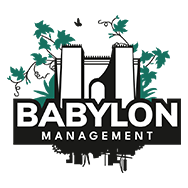Moving to a leadership position is an exciting yet challenging journey, requiring more than hard work but a strategic approach to develop the necessary skills, build solid relationships, and discover growth opportunities.
Many professionals assume leadership is reserved for those with years of experience, but the truth is that leadership starts long before you get the title. If you’re eager to advance in your field, read this guide below to learn more about the best strategies for transitioning from an entry-level employee to a leader within your organization.
Key Takeaways:
- Excelling in your responsibilities, demonstrating reliability, and showing initiative establish you as a strong leadership candidate.
- Take on mentorship roles, lead small projects, and refine decision-making and conflict-resolution skills before stepping into a leadership position.
- Connecting with colleagues, mentors, and industry leaders can open doors to opportunities and accelerate your career growth.
- Leadership development programs, professional training, and industry resources help you stay competitive and prepared for leadership challenges.
Mastering Your Current Role
Before stepping into a leadership position, you must first prove yourself in your current role. Promotions are rarely given just because someone has been in a position for a certain amount of time. Instead, leaders are chosen based on performance, reliability, and the ability to take on more responsibility. If you want to move up, you need to stand out as someone who not only excels in their role but also shows leadership potential.
Here’s how you can build credibility and position yourself for leadership:
- Exceed expectations: Consistently perform at a high level, not just meeting but surpassing your targets. Deliver results that make an impact.
- Be reliable: Show up on time, meet or beat deadlines, and follow through on commitments. Leaders must be dependable under all circumstances.
- Solve proactively: Instead of just identifying issues in your organization, propose well-thought-out solutions as well. Leaders don’t just highlight problems—they fix them.
- Show initiative: Volunteer for additional tasks or projects, even if they’re outside your job description. If you see inefficiencies, take steps to improve them.
- Own your mistakes and learn from them: Leaders take responsibility for their actions. Instead of making excuses, acknowledge errors, learn from them, and move forward.
- Manage your time effectively: Demonstrating strong time management skills shows that you can handle greater responsibilities without being overwhelmed.
- Support your team: Leadership isn’t just about individual success. Help your colleagues when needed, offer guidance, and be a solid team player.
- Communicate clearly and professionally: Strong communication skills—both written and verbal—are essential for leadership. Practice being articulate, concise, and confident in your interactions.
- Demonstrate emotional intelligence: Stay professional under pressure, handle criticism constructively, and navigate workplace challenges with a level-headed approach.
Mastering your current role isn’t just about doing your job well—it’s about setting yourself apart as someone who is ready for the next step. By consistently delivering results, taking initiative, and showing leadership qualities, you’ll naturally become the obvious choice when leadership opportunities arise.
Develop and Implement Leadership Skills Early
Leadership isn’t just about having authority—it’s about influencing others, making crucial decisions, and helping drive team success. Even before you have the official title, you can start developing leadership skills in small but meaningful ways. The earlier you build these skills, the more naturally leadership responsibilities will come to you when the opportunity arises.
Here’s how you can start developing leadership skills now:
- Mentor new employees: Helping new hires get settled and answering their questions shows your ability to lead, support others, and share knowledge. Even informal mentorship can demonstrate leadership potential.
- Take ownership of projects: Step up to lead initiatives, whether it’s organizing team meetings, streamlining workflows, or spearheading a new process improvement. Taking charge of small tasks prepares you for larger responsibilities.
- Improve decision-making skills: Leaders make tough calls under pressure. Practice weighing pros and cons, gathering relevant information, and making confident choices. Start by making small but impactful decisions in your current role.
- Learn to delegate: Even if you’re not in a formal leadership role, find opportunities to distribute tasks effectively. Good leaders know they don’t have to do everything themselves.
- Enhance your conflict resolution abilities: Workplace disagreements are inevitable. Learning how to mediate conflicts professionally, remain neutral, and foster collaboration will prepare you for leadership challenges.
- Take initiative in meetings: Speak up, share ideas, and contribute solutions. Leaders don’t wait to be asked for input—they provide valuable insights proactively for the betterment of the organization.
By practicing leadership before you’re officially in a leadership role, you’ll already have the skills and confidence to excel when the opportunity arises.
Build Strong Professional Relationships
Having a strong professional network can accelerate your path to leadership by exposing you to mentorship, career opportunities, and valuable insights that you might not have access to otherwise. Surrounding yourself with the right people—whether inside or outside your organization—can provide guidance, support, and opportunities to develop leadership skills in real-world settings.
Here’s a breakdown of how you can build these professional connections:
- Network within your company: Engage with colleagues across different departments to gain a broader understanding of company operations, challenges, and goals. This cross-functional knowledge will make you a more adaptable and well-rounded leader.
- Engage with senior leaders: Observe how company leaders think, communicate, and make decisions. Doing so not only gives you relevant insights but also establishes relationships with them, which increases your visibility when promotions arise.
- Find a mentor: Learn from someone who has successfully transitioned into a leadership position. Their insights and advice can help you navigate career challenges and growth opportunities.
- Be approachable and supportive: Foster a positive work environment by offering help, recognizing team achievements, and maintaining an encouraging attitude. Great leaders uplift others and leave a lasting impact on their colleagues’ professional growth.
- Engage in industry networking: Attend conferences, join professional groups, and connect with leaders in your field. The more relationships you build outside of your company, the more opportunities you’ll find for career advancement.
- Leverage social platforms like LinkedIn: Share relevant insights, comment on industry trends, and engage with professionals about leadership topics. Your online presence can help you build credibility, especially as employers become increasingly reliant on these platforms to gauge a candidate’s expertise, thought leadership, and professional network.
Strong professional relationships make you a known and trusted figure, increasing your chances of being considered for leadership roles.
Learn From Feedback and Adapt
Receiving and applying feedback is a key part of growth. The ability to accept feedback with a growth mindset separates leaders from those who stay stagnant in their careers.
Here’s how to make the most of feedback:
- Seek feedback regularly: Proactively ask your manager, colleagues, and even subordinates for input on your performance. Different perspectives can highlight strengths and areas for growth that you may not have noticed.
- Embrace constructive criticism: Instead of taking feedback personally, view it as a tool for improvement. Great leaders recognize that feedback—whether positive or critical—is essential for professional development.
- Actively listen and clarify: When receiving feedback, ask follow-up questions to understand the point being made fully. This demonstrates your commitment to learning and ensures you gain valuable insights.
- Track progress and make adjustments: Take note of recurring feedback themes and work on addressing them. Implement changes, track your progress, and revisit those areas with mentors or supervisors to measure improvement.
- Use feedback to build resilience: Not all feedback will be easy to hear, but learning to handle criticism professionally will prepare you for the challenges of leadership. Leaders are constantly evaluated, and developing thick skin while remaining receptive to growth is crucial.
- Learn from both successes and failures: Feedback isn’t just about correcting mistakes; it’s also about reinforcing what works. Identify what you’ve done well and strive to build on those strengths.
- Create a feedback-friendly environment: Encourage open dialogue and constructive feedback in your workplace. A strong leader fosters a culture where feedback is valued and used for collective growth.
The best leaders are those who continuously refine their skills based on experience and feedback. By actively seeking input, embracing change, and committing to personal and professional growth, you’ll position yourself for long-term leadership success.
Invest in Professional Development
Great leaders never stop learning. Investing in your own growth shows dedication to your career and positions you as someone who is serious about stepping into a leadership position. Continuous development helps you stay relevant and prepared for the challenges that come with leadership.
Here are some of the best ways to invest in your professional development:
- Take leadership courses: Many organizations offer leadership communication skills training and other development programs focused on similar competencies to help employees develop critical skills like public speaking, negotiation, and team management.
- Attend workshops and seminars: Learning from experienced leaders can provide you with new strategies and insights on how to lead effectively.
- Explore relevant industry resources: Some of the best leadership lessons come from books, podcasts, articles, and webinars. Learn about various leadership styles and practices from these sources to expand your knowledge.
- Consider additional certifications: Leadership certifications in management, project leadership, or executive training can add credibility to your qualifications.
- Join a leadership development program: Some companies offer internal programs to prepare employees for leadership roles. If your organization has one, take full advantage of it.
- Stay updated on industry trends: Effective leaders need to be forward-thinking. That means you must keep up with changes in your field so you can make informed decisions.
Leadership is a skill that can be learned and refined. The more you invest in your growth, the more prepared you’ll be when leadership opportunities arise.
Become an Effective Leader
Transitioning to a leadership position takes time, effort, and a proactive mindset. By applying the strategies discussed above, you can set yourself up for long-term success, no matter where you are in your career.
Are you ready to take the next step in your professional journey? At Babylon Management, we help professionals develop the skills and confidence needed to grow into leadership roles. Reach out today to learn how we can support your path to leadership success!
Visit Babylon Management to learn more.

